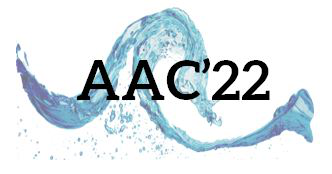Speaker
Description
Future colliders, such as the Electron Ion Collider (EIC) will require injector linacs to accelerate large electron bunches over a wide range of energies. Current designs are typically based around long travelling wave structures, where power is coupled on axis between cavities. We propose the use of a 1 m distributed coupling design as an efficient means of achieving high gradient acceleration. Distributed coupling allows power to be fed into each cavity directly via a waveguide manifold, avoiding on-axis coupling. A distributed coupling structure at S-band was designed to optimize for shunt impedance and large aperture size. This design provides greater efficiency, thereby lowering the number of klystrons required to power the full linac, as compared to known parameters and specifications of the travelling wave design planned for EIC. In addition, particle tracking analysis shows that this linac maintains lower emittance as bunch charge increases to 14 nC and wakefields become more prevalent. We present the design of this distributed coupling structure, as well as preliminary data from cold tests on the structure's real world performance.
Acknowledgments
This work was supported by the Department of Energy Contract No. DE-AC02-76SF00515. ACE3P used resources of NERSC, a DOE user facility operated under contract No. DE-AC02-05CH11231

